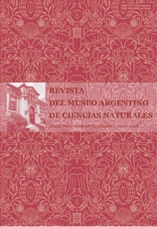Floración de las especies de interés apícola en el noroeste de Chubut, Argentina
Resumen
Flowering of species with apicultural importance in the northwest of Chubut (Argentina).
With the aim of providing information about the availability of resources used by Apis mellifera L., the
flowering phenology of 110 species of apicultural importance was recorded in the northwest of Chubut during
2003, 2004 and 2005. The plants studied were selected by taking into account previous melissopalynological
researches, as well as observations of the activity carried out by Apis mellifera on these plants. The registered
phenophases were: a) beginning of flowering b) full flowering c) end of flowering and beginning of fructification.
In all these cases the frequency of visits of Apis mellifera was recorded. From the total of species recorded, 48
are native plants, 56 are naturalized plants and 6 are cultivated. All the flowerings observed correspond to a
period that extends from the beginning of September to April. The major flowering offer was recorded in December
and in the first fortnight of January, when the highest number of species was in full flowering. The families
mostly used by Apis mellifera were: Asteraceae, Fabaceae, Rosaceae, Rhamnaceae y Brassicaceae. The native
plants mostly visited were: Aristotelia chilensis (Molina) Stuntz, Buddleja globosa Hope, Colletia hystrix Closs.,
Discaria trinervis (Gillies) Reiche, Discaria articulata (Phil.) Miers, Discaria chacaye D. Don (Tortosa), Escallonia
virgata (Ruiz et Pav.) Person, Embothrium coccineum Forster & Forster f., Lomatia hirsuta (Lam.) Diels, Luma
apiculata (DC) Burret, Myrceugenia exsucca (DC) O. Berg., Phacelia secunda J. F. Gmel, Ribes magellanicum
Poiret and Schinus patagonica (Phil) I. M. Johnst.
With the aim of providing information about the availability of resources used by Apis mellifera L., the
flowering phenology of 110 species of apicultural importance was recorded in the northwest of Chubut during
2003, 2004 and 2005. The plants studied were selected by taking into account previous melissopalynological
researches, as well as observations of the activity carried out by Apis mellifera on these plants. The registered
phenophases were: a) beginning of flowering b) full flowering c) end of flowering and beginning of fructification.
In all these cases the frequency of visits of Apis mellifera was recorded. From the total of species recorded, 48
are native plants, 56 are naturalized plants and 6 are cultivated. All the flowerings observed correspond to a
period that extends from the beginning of September to April. The major flowering offer was recorded in December
and in the first fortnight of January, when the highest number of species was in full flowering. The families
mostly used by Apis mellifera were: Asteraceae, Fabaceae, Rosaceae, Rhamnaceae y Brassicaceae. The native
plants mostly visited were: Aristotelia chilensis (Molina) Stuntz, Buddleja globosa Hope, Colletia hystrix Closs.,
Discaria trinervis (Gillies) Reiche, Discaria articulata (Phil.) Miers, Discaria chacaye D. Don (Tortosa), Escallonia
virgata (Ruiz et Pav.) Person, Embothrium coccineum Forster & Forster f., Lomatia hirsuta (Lam.) Diels, Luma
apiculata (DC) Burret, Myrceugenia exsucca (DC) O. Berg., Phacelia secunda J. F. Gmel, Ribes magellanicum
Poiret and Schinus patagonica (Phil) I. M. Johnst.
Texto completo:
PDFEnlaces refback
- No hay ningún enlace refback.

This work is licensed under a Creative Commons Attribution 3.0 License.

